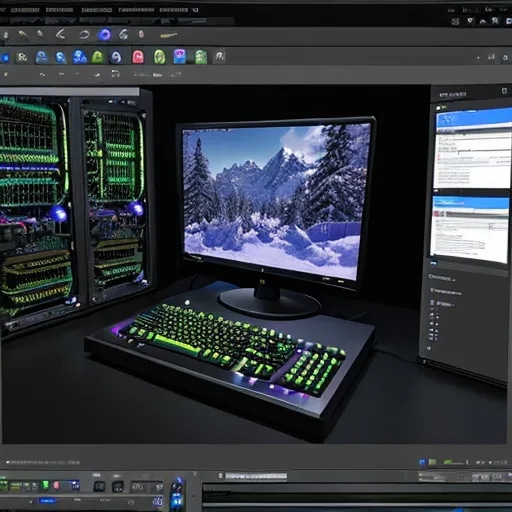Table of Contents
Introduction
In recent years, the application of AI-based technologies has become increasingly prevalent in the field of programming. AI-driven performance optimization in programming is the process of leveraging AI to accelerate and enhance the efficiency of the development process. With this approach, developers can create faster software, minimize errors, and improve their productivity. By utilizing AI in programming endeavors, organizations can develop custom software solutions that are more efficient, reliable, and secure. With the increased utilization of AI in programming, developers are now able to develop faster and more reliable solutions and deliver them quickly and cost-effectively.

Benefits of AI-Driven Performance Optimization in Programming
One of the primary benefits of leveraging AI-based technologies in programming is its capacity to allow for faster development cycles. By automating some processes, developers can complete tasks quickly and accurately, resulting in reduced development cycles. Moreover, AI can assist in reducing the time required to debug and test applications. AI can also reduce the amount of manual work required by developers, allowing them to focus more on higher-level developmental tasks.
Another benefit of utilizing AI in programming is the improved accuracy and scalability it can provide. AI-based technologies can provide developers with an increased level of detail and accuracy when compared to manual coding processes. This can result in fewer errors in applications and improved stability. Furthermore, AI-driven performance optimization in programming can be scaled to work with different application sizes, making it ideal for enterprise solutions.
Finally, AI-based technologies can be used to secure applications and data. AI can be used to detect and respond to malicious and fraudulent activities quickly and accurately, as well as to identify and address security vulnerabilities before they can be exploited. Additionally, by using AI algorithms, businesses can reduce the need for constant data maintenance and better protect customer data.

Challenges of AI-Driven Performance Optimization in Programming
Despite its many benefits, AI-driven performance optimization in programming does come with some challenges. One of the primary challenges is the cost associated with implementing the technology. AI-based solutions involve a certain level of data integration and complexity, both of which can come at a high cost. Additionally, the use of AI in programming requires highly skilled personnel to be trained in the technology and develop the applications. Lastly, AI-based solutions cannot address all development challenges and can sometimes fail to meet expectations and put more strain on development teams.

In addition, AI-based technologies pose certain ethical guidelines that organizations must address. In particular, AI can lead to certain biases in data sets and algorithms, which could lead to issues such as discrimination, privacy violations, and limitations in access to essential services. As such, organizations need to ensure that ethical considerations are taken into account and that the technology is used responsibly and within the framework of applicable laws.

Utilizing AI-Driven Performance Optimization in Programming
Organizations can use AI-driven performance optimization in programming in a variety of ways. Firstly, AI can be used to detect and respond to errors and anomalies within coding quickly and accurately. AI algorithms can provide an efficient way to debug and detect bugs and errors, allowing developers to fix them more quickly. Furthermore, AI can be used to detect any malicious activities in the code and patch them as soon as they are detected.
Furthermore, AI can be used to optimize code development. AI algorithms can analyze code and suggest improvements or additions based on their observations. Additionally, AI can provide greater insights in the debugging process, allowing developers to improve their productivity by identifying and addressing issues faster.
AI-based technologies can be used to automate the testing process. AI solutions can be used to develop automated tests with significantly higher accuracy and precision than manual tests. Additionally, AI tests can be scaled as needed to cover different types of applications and users. AI can also be used to detect security weaknesses in applications and suggest courses of action to remediate them.

Conclusion
The application of AI-driven performance optimization in programming has become increasingly popular in recent years. By leveraging AI, developers can improve their productivity, reduce errors, and gain greater insights into their projects. AI-based solutions present numerous advantages to organizations, from faster development cycles to improved accuracy and scalability. However, AI-driven performance optimization in programming also comes with certain challenges, such as the cost and complexity associated with implementation. With ethical considerations in mind, organizations can benefit significantly from the application of AI-driven performance optimization in programming.
